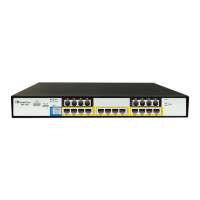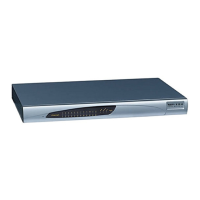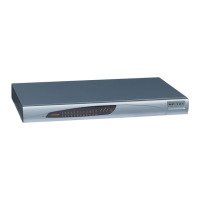Version 5.8 229 October 2009
SIP User's Manual 3. Web-Based Management
2. Configure the management settings. In addition, you can configure the following
SNMP settings:
• SNMP Trap Destinations: Click the arrow
button to configure the SNMP trap
destinations (refer to ''Configuring the SNMP Trap Destinations Table'' on page
229).
• SNMP Community String: Click the arrow
button to configure the SNMP
community strings (refer to ''Configuring the SNMP Community Strings'' on page
230).
• SNMP V3 Table: Click the arrow
button to configure the SNMP V3 users
(refer to ''Configuring SNMP V3 Table'' on page 232).
• SNMP Tru
sted Managers: Click the arrow
button to configure the SNMP
Trusted Managers (refer to ''Configuring SNMP Trusted Managers'' on page 233).
3. Click the Submit button to save your changes.
4. To save the changes to flash memory, refer to ''Saving Configuration'' on page 237.
3.5.1.1.1 Configuring the SNMP Trap Destinations Table
The 'SNMP Trap Destinations' page allows you to configure up to five SNMP trap
managers.
¾ To configure the SNMP Trap Destinations table:
1. Access the 'Management Settings' page, as described in ''Configuring the
Management Settings'' on page 228.
2. In the 'SNMP Trap De
stinations' field, click the right-pointing arrow
button; the
'SNMP Trap Destinations' page appears.
Figure 3-179: SNMP Trap Destinations Page
3. Configure the SNMP trap managers parameters according to the table below.
4. Click the Submit button to save your changes.
5. To save the changes to flash memory, refer to ''Saving Configuration'' on page 237.
Note: Only table row entries whose corresponding check boxes are selected are
applied when clicking Submit; otherwise, settings revert to their defaults.

